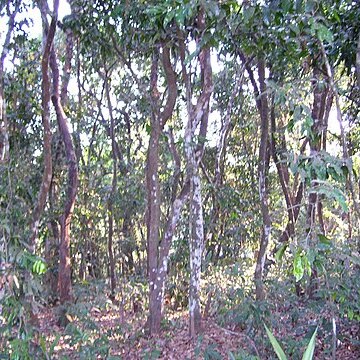| Therapeutic use
|
Astringents (bark), Diarrhea (bark), Dyspepsia (bark), Eye drops (bark), Anemia (flower), Aphrodisiacs (flower), Cough (flower), Diarrhea (flower), Dyspepsia (flower), Disorder of ejaculation (flower), Hematologic diseases (flower), Leukorrhea (flower), Night blindness (flower), Scabies (flower), Skin diseases (flower), Splenic diseases (flower), Splenomegaly (flower), Urinary tract infections (flower), Urologic diseases (flower), Astringents (fruit), Blister (fruit), Diabetes mellitus (fruit), Diarrhea (fruit), Digestive system diseases (fruit), Diuretics (fruit), Flatulence (fruit), Laxatives (fruit), Pharyngitis (fruit), Urination disorders (fruit), Vomiting (fruit), Wound healing (fruit), Wounds and injuries (fruit), Angiotensin-converting enzyme inhibitors (leaf), Astringents (leaf), Corneal diseases (leaf), Diabetes mellitus (leaf), Diarrhea (leaf), Diuretics (leaf), Dysentery (leaf), Dyspepsia (leaf), Endophthalmitis (leaf), Eye drops (leaf), Fever (leaf), Flatulence (leaf), Hemostatics (leaf), Laxatives (leaf), General tonic for rejuvenation (leaf), Scabies (leaf), Wound healing (leaf), Astringents (root), Cholera (root), Corneal diseases (root), Diabetes mellitus (root), Diarrhea (root), Diuretics (root), Dysentery (root), Dyspepsia (root), Endophthalmitis (root), Eye drops (root), Fever (root), Flatulence (root), Hemostatics (root), Laxatives (root), Malaria (root), General tonic for rejuvenation (root), Snake bites (root), Wound healing (root), Anti-bacterial agents (seed), Contraceptive agents (seed), Contraceptives, oral (seed), Cough (seed), Diarrhea (seed), Dysentery (seed), Disorder of ejaculation (seed), Hemagglutination (seed), Jaundice (seed), Skin diseases (seed), Sterilization, reproductive (seed), Typhoid fever (seed), Urologic diseases (seed), Cough (stem), Disorder of ejaculation (stem), Skin diseases (stem), Urologic diseases (stem), Astringent (unspecified), Itch (unspecified), Lithontriptic (unspecified), Piscicide (unspecified), Ringworm (unspecified), Attenuant (unspecified), Excrescence (unspecified), Leprosy (unspecified), Blood (unspecified), Carminative (unspecified), Diarrhea (unspecified), Diuretic (unspecified), Dysentery (unspecified), Eye (unspecified), Laxative (unspecified), Mental (unspecified), Nerves (unspecified), Urogenital (unspecified), Insanity (unspecified), Palpitation (unspecified), Intoxicant (unspecified), Skin (unspecified), Astringents (unspecified), Fishes, poisonous (unspecified), Urinary bladder calculi (unspecified), Anti-infective agents (unspecified), Cholera (unspecified), Diuretics (unspecified), Dyspepsia (unspecified), Eye diseases (unspecified), Flatulence (unspecified), Kidney calculi (unspecified), Menorrhagia (unspecified), General tonic for rejuvenation (unspecified), Ulcer (unspecified), Urination disorders (unspecified), Urologic diseases (unspecified)
|

